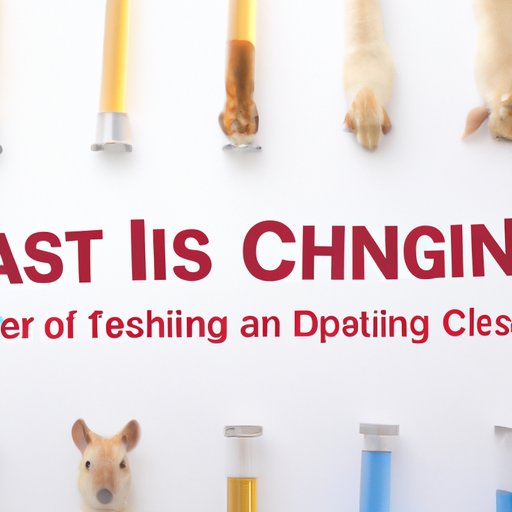Introduction
Animal testing is defined as the use of non-human animals in experiments or development projects for the purpose of furthering scientific knowledge. Animals are used to test drugs, medical procedures, and products, among other things. While animal testing has been a part of scientific research for centuries, it is increasingly being recognized as a flawed practice with serious consequences.

Inhumane Nature of Animal Testing
The most obvious consequence of animal testing is the suffering it causes to the animals involved. Animal testing often involves painful and invasive procedures that can cause physical trauma, disease, and even death. According to a report by the Physicians Committee for Responsible Medicine, “Animals used in experiments are commonly subjected to force feeding, food and water deprivation, burning, and other painful procedures without pain relief.”
In addition to the physical suffering caused by animal testing, there is also evidence to suggest that the psychological stress caused by such tests can be significant. A study published in the journal Applied Animal Behaviour Science found that laboratory mice exhibited signs of anxiety, depression, and post-traumatic stress disorder (PTSD). The authors of the study concluded that “the psychological welfare of these animals should not be underestimated.”
Inaccuracy of Animal Testing
Another issue with animal testing is that it is often unreliable. Animal models are not always accurate representations of human biology, and results from animal studies may not be applicable to humans. As Dr. John Pippin, MD, FACC, notes, “Because of fundamental physiological, metabolic, and anatomical differences between humans and other species, translating results from animal studies to humans is often impossible.”
Furthermore, there have been numerous examples of animal tests producing inaccurate results. For example, in 2006, a drug called TGN1412 was tested on six healthy volunteers after successful animal trials. The drug caused a severe and potentially fatal reaction known as cytokine storm in the volunteers, highlighting the potential danger of relying on animal tests.
Financial Cost of Animal Testing
Animal testing is also an expensive practice. The cost of caring for and maintaining laboratory animals can be quite high, and this cost is passed on to taxpayers and consumers. According to the American Anti-Vivisection Society, the total cost of animal testing in the United States is estimated to be around $15 billion annually.
This money could be better spent on developing more reliable and humane methods of testing. There are numerous alternatives to animal testing that are both cheaper and more accurate, such as cell cultures, computer simulations, and clinical studies.
Ethical Implications
Finally, animal testing raises ethical questions about our attitude towards animals and our responsibilities as stewards of the planet. Many people feel that it is wrong to subject animals to pain and suffering, regardless of the potential benefits to society. As Dr. Ray Greek, president of Americans For Medical Advancement, puts it, “We have to ask ourselves if we are comfortable with the idea of using animals as disposable commodities in the pursuit of knowledge or profit.”
The ethical implications of animal testing extend beyond the issue of animal welfare. It also calls into question our values as a society. Do we prioritize scientific progress over animal welfare? Are we willing to accept the suffering of animals in order to make medical advances? These are difficult questions with no easy answers.
Alternatives to Animal Testing
Fortunately, there are alternatives to animal testing that can produce more accurate and humane results. In vitro testing, which uses cells grown in a lab, is becoming increasingly popular as a way to test drugs and other substances. Computer simulation and clinical studies are also viable options.
These alternatives are not only more humane, but they are also more efficient and cost-effective. In vitro testing, for example, can produce results much faster than animal testing, and computer simulation can provide detailed insights into how a substance will interact with the body.
Conclusion
Animal testing is an outdated practice that is both inhumane and inaccurate. The physical and emotional suffering inflicted on animals, as well as the inaccuracy of the results, makes it clear that animal testing is not a valid or reliable form of scientific research. Furthermore, the financial cost of animal testing is significant, and this money could be better spent on developing more reliable and humane methods of testing.
There are numerous alternatives to animal testing that are both cheaper and more accurate. These alternatives offer the potential for more efficient and humane forms of scientific research, and should be explored and implemented whenever possible.
(Note: Is this article not meeting your expectations? Do you have knowledge or insights to share? Unlock new opportunities and expand your reach by joining our authors team. Click Registration to join us and share your expertise with our readers.)
